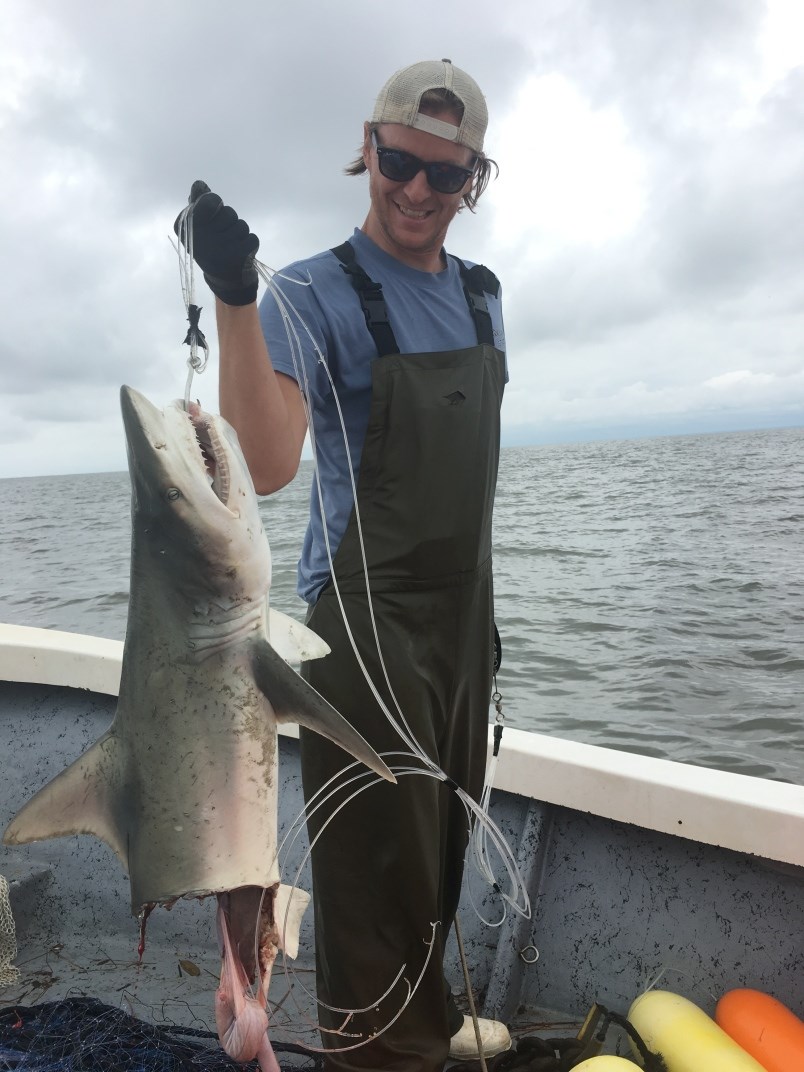Growing up as a surfer and diver in Hermosa Beach, California, current Bowen Islander Chris Mull says he can’t remember a time when he was not fascinated by sharks and rays.
“I spent most of my time at the beach and in the water,” he says, “I remember seeing leopard sharks and thornback rays darting beneath me as I was surfing, and having to shuffle my feet to avoid being stung by round stingrays. We spent a lot of time over on Catalina Island and that’s where I saw my first bat rays, guitarfish, and torpedo rays. My fascination, I guess, is something I never outgrew.”
Sharks, rays and chimaeras have skeletons composed of cartilage and are the oldest jawed vertebrates on earth. The creatures within this group are also very old, in an evolutionary sense, dating about 300 million years before the appearance of dinosaurs on earth, and are even older than trees! Currently one quarter of all known species are imperiled with extinction, with overfishing being the main threat.
Mull is a Postdoctoral Scientist at Simon Fraser University, and recently published a study ranking all 1,192 species of sharks and rays according to their evolutionary distinctiveness as a way to prioritize species for conservation.
“When most people think of sharks or rays, they only think of a few species like great whites, hammerheads or manta rays,” says Mull. “Unfortunately most conservation efforts tend to focus on those charismatic species. The goal of conserving biodiversity should be to maximally preserve the tree of life: to save things that are older, in an evolutionary sense, with fewer close relatives.These species tend to embody more evolutionary history.”
He adds that every year the shark and ray tree of life increases by about 1200 years, or one year for every species.
“If a single species is lost to extinction we will prune tens to hundreds of millions of years of evolutionary history. from the tree,” he says.
Mull’s team also highlighted two groups deserving of special attention when it comes to conservation: Mackerel Sharks (order Lamniformes) and Guitarfishes, Wedgefishes, and Sawfishes (order Rhinopristiformes). The former group is made up of large-bodied and wide-ranging sharks, including the basking shark, which was once abundant in BC waters but is currently Endangered.
The former group is made up of large-bodied and wide-ranging sharks, including the basking shark, which was once abundant in BC waters but is currently Endangered.
“Basking sharks represent about 95 million years of unique evolutionary history,” says Mull. “They are slow growing, reach maturity at a late age and also have few offspring. What is really unique about them, though, is that they provide a rare example of filter feeding. This is only seen in two other species of shark and a single family of rays.”
Mull says that while people don’t typically associate Canada with sharks, there are 65 species of sharks in Canadian waters.
“Many of them are evolutionarily distinct and imperiled,” he says. “The broadnose sevengill shark and white sharks are other examples.”
Mull and his team identified global hotspots for shark and ray conservation including the southwest Atlantic, West Africa, the Southwest Indian Ocean, and the South West Pacific Ocean. The Zoological Society of London will launch a conservation initiative to help build capacity for sharks and rays conservation in these areas.
To learn more, you can follow Chris on twitter at @drsharkbrain.



